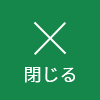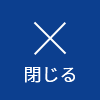About Soma Nomaoi (Museum Exhibit)

Sacred Flag Competition diorama
Declared a national important intangible folk culture asset, Soma Nomaoi is a horse-centered festival that occurs on the last Saturday, Sunday, and Monday in July. It takes place in each section of the former Nakamura Domain, with the main events focused on Minamisoma’s festival grounds, Hibarigahara.
This museum displays a lively diorama recreating the Sacred Flag Competition, as well as suits of armor and other ritualistic implements used during Nomaoi, and an illustration of Soma Nomaoi on a pair of folding screens depicting the festival in the Edo Period (1600-1868 CE). Using these items and more, the museum introduces the history and transitions of Soma Nomaoi, as the festival continues to impart the traditions of the samurai down through generations.
Current-day Nomaoi Events
Days 1-3
History of Nomaoi
Nomaoi’s beginnings, Nomaoi during the Edo Period, Nomaoi from the Meiji Period (1868-1912) onward
Various Implements
Armor, portable shrines, flags, personal belongings, implements for Noma Kake (wild horse capture)
Click the link below for more information about this year's festivities.
Current-Day Nomaoi Events
The festival is held on the last Saturday, Sunday, and Monday in July, in each section of the former Nakamura Domain.
(NOTE: Beginning in 2024, the festival will be held at the end of May.)
Day 1
Okuridashi (Departure)

Departure (Soma Nakamura Shrine)
The departure ceremony occurs at Soma Nakamura Shrine (Soma City), Soma Ota Shrine (Minamisoma, Haramachi Ward), and Soma Odaka Shrine (Minamisoma, Odaka Ward), as a parade carrying each shrine’s omikoshi (portable shrine carried in festivals) departs for the Hibarigahara Festival Grounds.
Yoinorikeiba (Pre-Event Horse Race)

Pre-Event Horse Race (Hibarigahara Field)
After a ceremony to purify the horse-riding grounds of Hibarigahara, warriors wearing white headbands, battle surcoats, and divided skirts known as nobakama engage in a horse race.
Day 2
Ogyouretsu (Parade)

Parade through the Haramachi district
The second day of Nomaoi is kicked off with a parade through the middle of Haramachi Ward, from Ogawa-cho to the Hibarigahara Festival Grounds.
Kacchuu Keiba (Armored Horse Race)

Armored Horse Race (Hibarigahara Field)
Horseback warriors decked in armor and with a flag strapped to their back engage in a thrilling horse race.
Shinki Soudatsusen (Sacred Flag Competition)

Sacred Flag Competition (Hibarigahara Field)
Colored flags from each shrine are fired into the air by a cannon and flutter toward the ground, as horseback fighters struggle to catch them midair.
Day 3
Horseback warriors corral an unbridled horse into an enclosure set up in front of Odaka Shrine, where young men dressed in white attempt to catch it barehanded. Upon capturing the horse, the men dedicate it to the shrine as an offering. This event hails back to the early shape of Nomaoi.

Nomakake (Soma Odaka Shrine)
Youths attempt to capture a horse barehanded

Nomakake (Soma Odaka Shrine)
The caught horse is then presented in front of the shrine as an offering.
History of Nomaoi
Nomaoi's Beginnings
According to legend, the first Nomaoi occurred in the 10th century by Taira No Masakodo, who is said to be a remote ancestor of the Soma clan. He released wild horses (noma) in the Koganehara fields of Shimousa Province (northwestern portion of current-day Chiba prefecture), and used them to represent enemy soldiers in his military exercises.
In the 14th century, the 6th head of the Soma Clan Soma Shigetane left his traditional land in Shimousa Province and moved to the Namekata District in Mutsu Province, now the area of Minamisoma and Iitate Village, bringing the tradition of Nomaoi with him.
Nomaoi During the Edo Period
During the Edo period (1600-1868), Nomaoi become an annual event held by the Soma clan as they presided over the Nakamura Domain. The name Nomaoi literally translates into “wild horse chase,” making it a fitting name as wild horses were chased in a wide meadow in what is now the Haramachi district of Minamisoma. These horses were then cornered at Odaka Myouken Shrine (now named Odaka Shrine) which worshipped the local deity Myouken. These horses were then caught barehanded and ritually offered to the shrine in the event known as Noma Kake (wild horse capture).
Illustration of Soma Nomaoi on Pair of Folding Screens
Edo-period prefecture designated tangible folk cultural property
Stored at Minamisoma Museum

Illustration of Soma Nomaoi (left screen)

Illustration of Soma Nomaoi (right screen)
Meiji Period Onward: Big Changes to Nomaoi

The main event of the modern Nomaoi began in the Meiji Period as a replacement for corralling horses.
Nakamura Domain disappeared with the abolition of feudal domains and the establishment of prefectures in 1871, and all of the wild horses in the Nomaoi fields were captured. As a result, the Soma clan was unable to hold its military event of chasing the horses.
Then, in 1872, the Ota Shrine’s religious festival was reborn, and in 1878 became the official combined festival for the Ota Shrine, the Odaka Shrine, and the Nakamura Shrine.
Rather than chasing horses, the Sacred Flag Competition was added, joined later after World War II by the Armored Horse Race. In this way, from the Meiji Period onward, Nomaoi underwent several changes to become what it is today.
Various Tools of Nomaoi
Armor and Weapons
The most exemplary items among the various tools used to pass down the military traditions of Nomaoi or the armor and weapons used by each horseback warrior. These are both tools of war and traditional works of art, and a highlight of the modern Nomaoi festival.
There are estimated to be over 1500 pieces of armor alone, including pieces that have survived in the Soma area and others that have been gathered from around the nation. Such a large collection of armor with designs specific to so many different areas is a rare sight throughout the nation.
(Note) The armor and weapons on display are regularly changed out of the exhibit. The armor and weapons shown on this page may not be on display. We ask for your understanding.

Black lacquer pigeon-breasted 5-piece full-body Armor
City-designated tangible cultural property from the Edo Period
Displayed at Museum

Saddle and stirrups decorated with lions and tree peonies, from the Edo Period
Displayed at museum
Various Tools in the Nomaoi Parade
Parade Tools
Besides the horseback warriors decked out in full armor, highlights of the parade include the portable shrine and the items carried by the warriors on foot.
Omikoshi (Portable Shrine) from Ota Shrine

Portable shrine from Ota Shrine (from Meiji Period)
Stored at Soma Ota Shrine
This portable shrine was made in the Meiji Period (1868-1912) and is still used in the parade.
Tsumeuchi Umajirushi (“Claw Strike” Battle Standard)

"Claw Strike" Battle Standard
Stored at Soma Ota Shrine
This large battle standard is raised next to the horse of the general, and has been known in the Soma clan as the tsumeuchi, or “claw strike,” since the Edo Period.
Tools for the Sacred Flag Competition
For the Sacred Flag Competition, colored flags with the names of one of the three shrines are fired into the air by a cannon, two flags at a time with a total of 20 shots.
Below, horseback warriors wearing a flag representing their household contend with each other to catch the sacred flags before they touch the ground. It is said that there were roughly 2500 different family flag designs in the Edo period.

Left: Sacred flags from the three shrines.
Right: Flags packed into a fireworks shell.

Flag (Black centipede on white background)
Displayed at museum
Main Exhibits
- Diorama of the Sacred Flag Competition
- “Illustration of Soma Nomaoi on Pair of Folding Screens (prefecture-designated tangible folk cultural property, reproduction)
- Soma Ota Shrine omikoshi
- Armor, weapons
- “Illustration of Oshu Soma Clan Capturing Horses” (Nomaoi picture scroll, image)
- Various tools used in Nomaoi (tools used for the parade, the Sacred Flag Competition, Nomakake, etc.)
- Figures of horseback warriors
- この記事に関するお問い合わせ先
- このページに関するアンケート
-
より良いウェブサイトにするために、このページのご感想をお聞かせください。















更新日:2024年01月22日